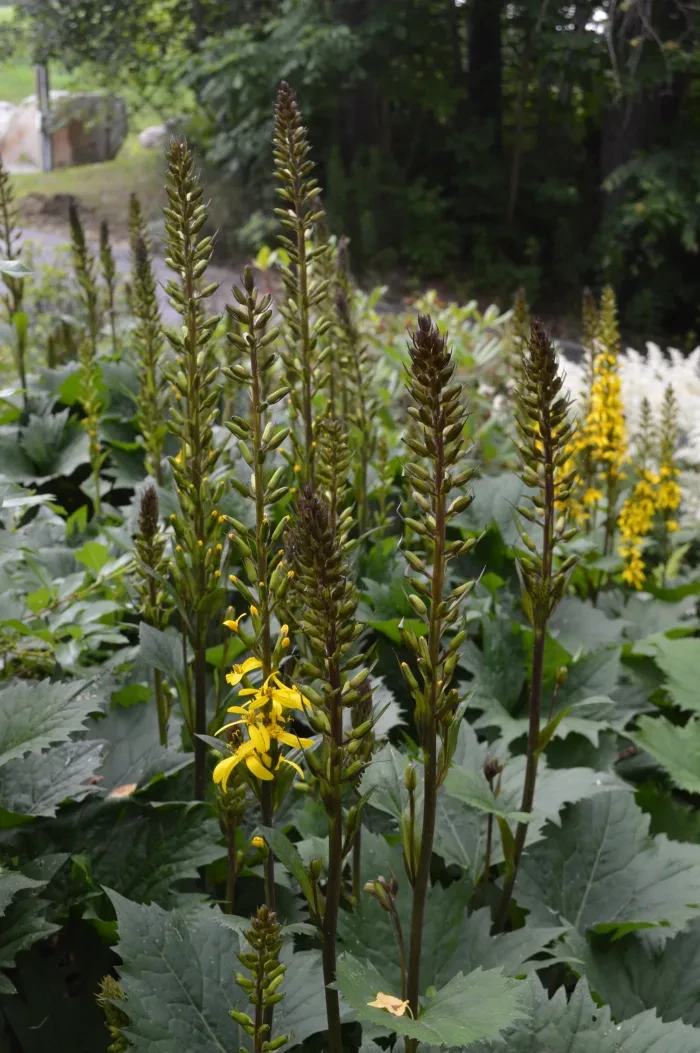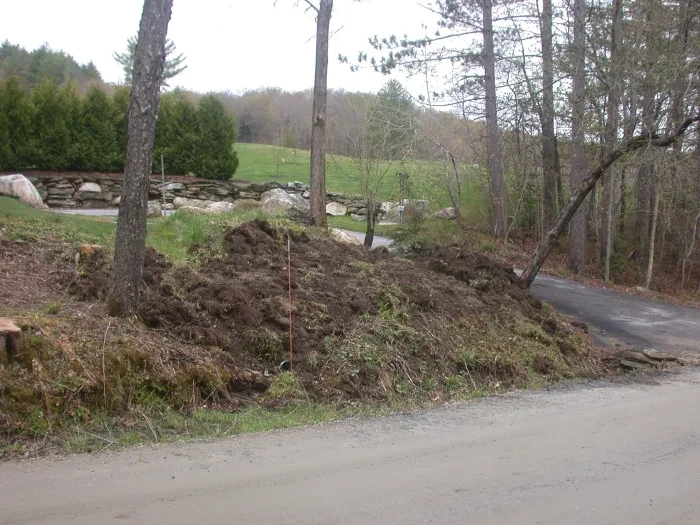The little hillside was perfectly content with its wildness once, proud of its brazen disarray. It was delightfully unkempt and blissfully uncultivated, dynamic and self-regulating, chaotic and biotic. It maintained a thicket of crisscrossing branches, a stockpile of leaf litter and a healthy collection of decaying detritus, just like the woodlands around it. It was one with the forest, a picture of nature. It was beautifully disorganized, untidily alive.
By Erica Ludlow Bowman—Ms. Bowman is a landscape architect with Julie Moir Messervy Design Studio with a passion for low-maintenance garden design. She's a regular contributing writer for Horticulture.
The little hillside was perfectly content with its wildness once, proud of its brazen disarray. It was delightfully unkempt and blissfully uncultivated, dynamic and self-regulating, chaotic and biotic. It maintained a thicket of crisscrossing branches, a stockpile of leaf litter and a healthy collection of decaying detritus, just like the woodlands around it. It was one with the forest, a picture of nature. It was beautifully disorganized, untidily alive.

Perfect ecological harmony always hangs in the balance, though. Even small disruptions can cause grave discord. This hillside would suffer from detachment at the construction of a small thoroughfare. Only wide enough to sustain a horse and its cart at first, this grew, as roads do, with the development of the neighboring farming community. Then a driveway cut through the hill’s tender banks and a drainage ditch sharpened its slope. Eventually surrounded on three sides by roadway and one side by a cultivated lawn, this little hillside became an island. Disconnected with the natural wilderness of which it once was part, its vegetation began to wither. Its steepened banks began to erode and exotic weeds crept in. This hillside was not happy anymore.
It also was not pretty. Luckily, the new inhabitants of the farmhouse were active stewards of their land. They maintained a large property of field and forest with springs and stream-fed ponds. They had several orchards, a small arboretum and plenty of showy perennial gardens surrounding the house. The landowners viewed the little hillside as a part of their larger New England landscape. They were concerned about its beauty and vitality but also with its re-integration with the greater environment.
They didn’t want a “fussy” garden in this space; they had plenty of those already. This was a back-of-the-house, side-of-the-road kind of place. They wanted a solution to its glaring ugliness, the rampant weediness and erosion that steepened the slope with each passing storm. They wanted something more complex than a hillside of shrubbery, less commonplace than a monoculture of pachysandra, and just “wild” enough to blend easily with the nearby forest. What they wanted was a restoration and invigoration of this hillside’s natural beauty. It would be a garden of intentional disarray, a tousled jewel in the rough, a tribute to the wild.

The cultural conditions of the hillside were like other recently cleared forest floors. There were stumps to contend with, living trees to work around, thin soils, large boulders and roots galore. Mechanical grubbing would have disturbed the root systems of the mature trees we elected to keep, so all soil preparation had to be done by hand. We opted to bring in more soil where we could; taking care not to bury the tree roots too deeply or make the steep grade any worse. We used boulders to help stabilize the banks. The rest was up to the vegetation. We opted for a mostly native palette of low-maintenance plants with staggered periods of bloom and elegant contrasts of fanciful foliage.
Clearing revealed the presence of a spring emerging from the center of the slope, which created a localized marsh condition and potential erosion problem. I celebrated this water source, however. It drove the first of the plant selections: golden ragwort (Packera aurea), winterberry (Ilex verticillata Red Sprite, or ‘Nana’) and the summer-blooming, water-loving Ligularia ‘The Rocket’.
It turned out that golden ragwort would become the star of this garden. It’s a speedy space filler and long-lasting bloomer, with brilliant yellow blossoms providing a strong spring presence. It was necessary to plant it in three repeating swaths for the sake of balance. While also yellow, ‘The Rocket’ is a bit more nuanced and blooms in later summer. It, too, is aggressive, so I placed its colony alongside the ragwort, hoping both would contend in the battle of space. The less intrusive winterberries are situated on the top of the slope, holding up the bank and perhaps providing a bit of winter color.
As part of the site evaluation,I took an inventory of existing native plants, which helped guide the rest of the plant selection. On the remains of the hill, I discovered scattered collections of foamflower (Tiarella cordifolia), Canadian wild ginger (Asarum canadense), red baneberry (Actaea rubra), the occasional trillium and assorted ferns. I put them all in a small holding bed for later use and made note of their success rates in further assessment of the existing environment. I also found about 10 square feet of hay-scented ferns (Dennstaedtia punctilobula) that seemed to be doing a good job stabilizing the bank, so I made the decision to simply leave them be.
The steep banks were tricky business. Some had an approximate 50-percent grade. While I primarily deferred to natives, I allowed in the sometimes aggressive, non-native creeping Jenny (Lysimachia nummularia ‘Aurea’) with hopes it would cling to the steepest of the slopes with style. I also used the creeping but less assertive Meehan’s mint (Meehania cordata) for its shade-tolerant, delicate purple blooms. The similarly slope-hugging foamflower was also helpful. Its shallow-rooted, vigorously spreading runners formed marble-leaved colonies in a short amount of time. For upright shapes, I encouraged pockets of the Canadian wild ginger to peek from beneath craggy boulders and enlisted pert colonies of dwarf Solomon’s seal (Polygonatum humile) to stand up and hold back the slope.
In the deepest, driest shade conditions, I planted sweet woodruff (Galium odoratum) and blue-eyed Mary (Omphalodes verna), a forget-me-not look-alike native to nearby Quebec. I clustered the many found plants of red baneberry in the areas of moist shade. We were rewarded with delightful (but not edible!) red berries in late summer.
The prissiest of the plants were reserved for the deepest soil, on the shallow grade of the top of the hill. These include a couple of varieties of non-native summer-blooming astilbes and the improved native goat’s beard (Aruncus dioicus ‘Kneiffii’). Native lady fern (Athyrium filix-femina ‘Victoriae’), maidenhair fern (Adiantum pedatum) and Christmas fern (Polystichum acrostichoides) also suit this spot. I took a chance on a hardy leucothoe, but it seems reluctant to thrive.
Three years after planting, the hillside is stabilized and visually improved. Though it has not become an exact replica of a wild, native space, the end product has been lush and satisfying. Colonies have thrived and naturalized, suppressing the worst of the weeds. Despite an intentional absence of maintenance, the garden remains a pleasing sight to behold.